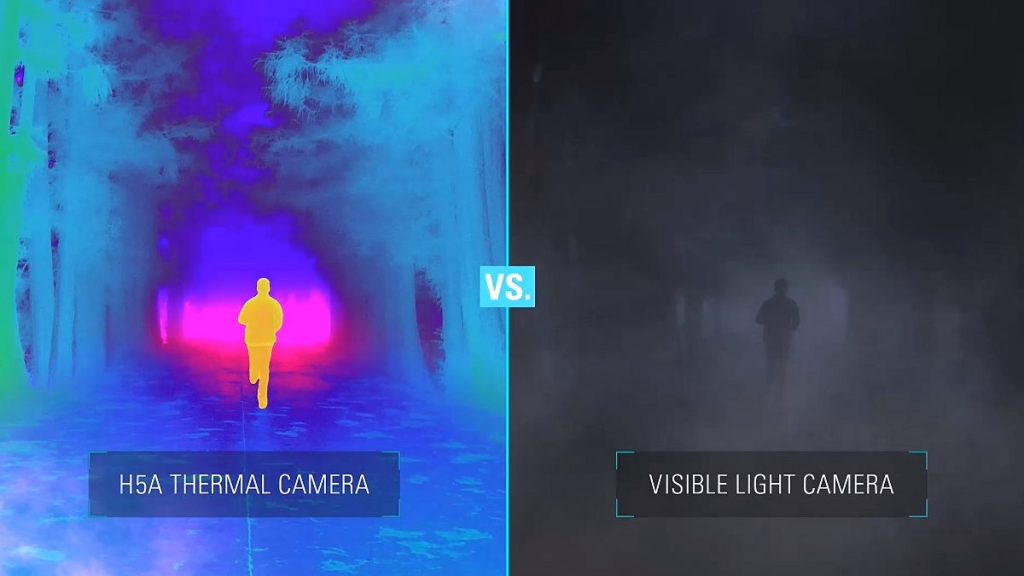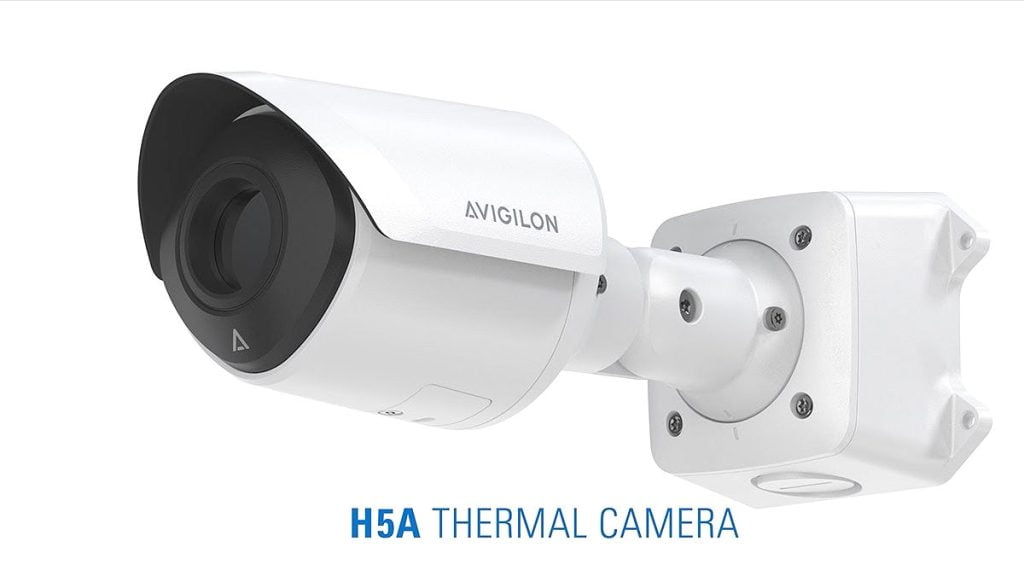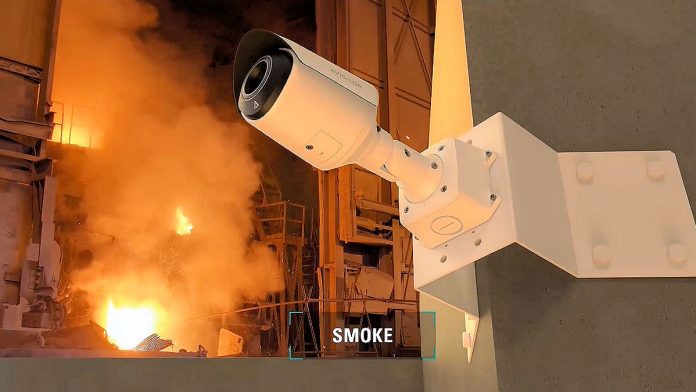Avigilon H5A Thermal Cameras Supercharge Analytics.
Avigilon H5A Thermal Cameras – Avigilon’s H5A thermal camera range integrates thermal sensing with the latest video analytics to deliver perimeter protection in low light, inclement weather or through encroaching foliage.
The range can also measure an object’s surface temperature to support safety applications such as identifying hot spots or overheating equipment, then generate alarm events to alert operators.
This cameras’ specification sheet is solid. These cameras are designed to live outside, with rating of IK10, IP66/67 and NEMA 250 Type 4X for impact, water and windblown dust resistance, protection from corrosion, and an operating range from -40 to 65C.
The robust construction continues under the hood with FIPS 140-2 cryptography with integrated TPM and secure boot – this is high-end stuff for an edge device like a CCTV camera – it’s rare to find TPM and secure boot, even in complex electronic security systems.

The image sensor options peak at 640 x 512 pixels via an uncooled VOx microbolometer with a pixel pitch of 12um and a spectrum range from 8um to 14um – the output image has an aspect ratio of 5:4 and the image stream is 30fps. There’s a 3D noise reduction filter and automatic flat field correction.
Sensitivity is 50 mK (40 mK on 30 fps models when Frame Averager feature is enabled) and thermal palettes options include white hot, black hot, rainbow, rainHC, ironBow, lava, artic, glowbow and gradedfire.
You get a bunch of VGA and QVGA lens options with fixed focal lengths between 4.3 and 36mm, all with fast apertures of F1.0 and angles of view between 12.2 x 9.7 degrees and 49.9 x 39.3 degrees, depending on lens choice.
Avigilon H5A Thermal Cameras Supercharge Analytics
Analytics is what the H5A is all about and there’s plenty of functionality here, with options including:
- Objects in Area – The event is triggered when the selected object type moves into the region of interest.
- Object Loitering – The event is triggered when the selected object type moves into the region of interest and then stays for an extended
- amount of time.
- Objects Crossing Beam – The event is triggered when the specified number of objects have crossed the directional beam that is configured over the camera’s field of view. The beam can be unidirectional or bidirectional.
- Object Appears or Enters Area – The event is triggered by each object that enters the region of interest. This event can be used to count objects.
- Object Not Present in Area – The event is triggered when no objects are present in the region of interest.
- Objects Enter Area – The event is triggered when the specified number of objects have entered the region of interest.
- Objects Leave Area – The event is triggered when the specified number of objects have left the region of interest.
- Object Stops in Area – The event is triggered when an object moves into a region of interest and then stops moving for the specified threshold time.
- Direction Violated – The event is triggered when an object moves in the prohibited direction of travel.
- Tamper Detection – The event is triggered when the scene unexpectedly changes.
There are also radiometric events which cover temperature below, above, or matching a pre-defined value. These events are triggered when the temperature in the region of interest is below, above or match a pre-defined temperature value.
Meanwhile, the temperature changed function is triggered when the temperature changes a predefined value during a designated period.
Other features include compression options of H.264 HDSM SmartCodec, H.265 HDSM SmartCodec, Motion JPEG with multi-streaming options, there’s bandwidth management idle scene mode, HDSM SmartCodec technology, motion detection pixel and classified objects capabilities.
The range has tamper detection, 64 privacy zones, audio compression options of Opus, G.711 PCM 8 kHz and is compliant with ONVIF Profile S, Profile T, and Profile M. There’s a USB 2.0 port, external I/O for alarm in/out, audio in/out, and microSD/microSDHC/microSDXC slot.
Keeping things secure are password protection, HTTPS encryption, digest authentication, WS authentication, user access log, and 802.1x port-based authentication, while device management can be handled by via SNMP v2c or SNMP v3.
The range includes the 320F-H5ATHC-BO12, 320F-H5ATHC-BO16, 320F-H5ATHC-BO24, 320F-H5ATHC-BO50, 640F-H5ATHC-BO12, 640F-H5ATHC-BO18, 640F-H5ATHC-BO24, 640F-H5ATHC-BO32 and the 640F-H5ATHC-BO50, with the variations offering different resolutions and focal lengths.
Dimensions of the cast aluminium housing are 307mm long, 126mm wide and 106mm high, including the rear junction box. Weight for all options is similar – around 1.45kg, including the polycarbonate sunshade.
Power Consumption is 10W with power options including 12V DC with a variation of 10 per cent and a minimum wattage of 9W, 24V DC with a minimum voltage of 15V DC. The camera can also be supported by PoE Class 3.
You can check out these Avigilon H5A thermal cameras here, talk to your Avigilon supplier about availability, or read more SEN news here.
“Avigilon H5A Thermal Cameras Supercharge Analytics.”











